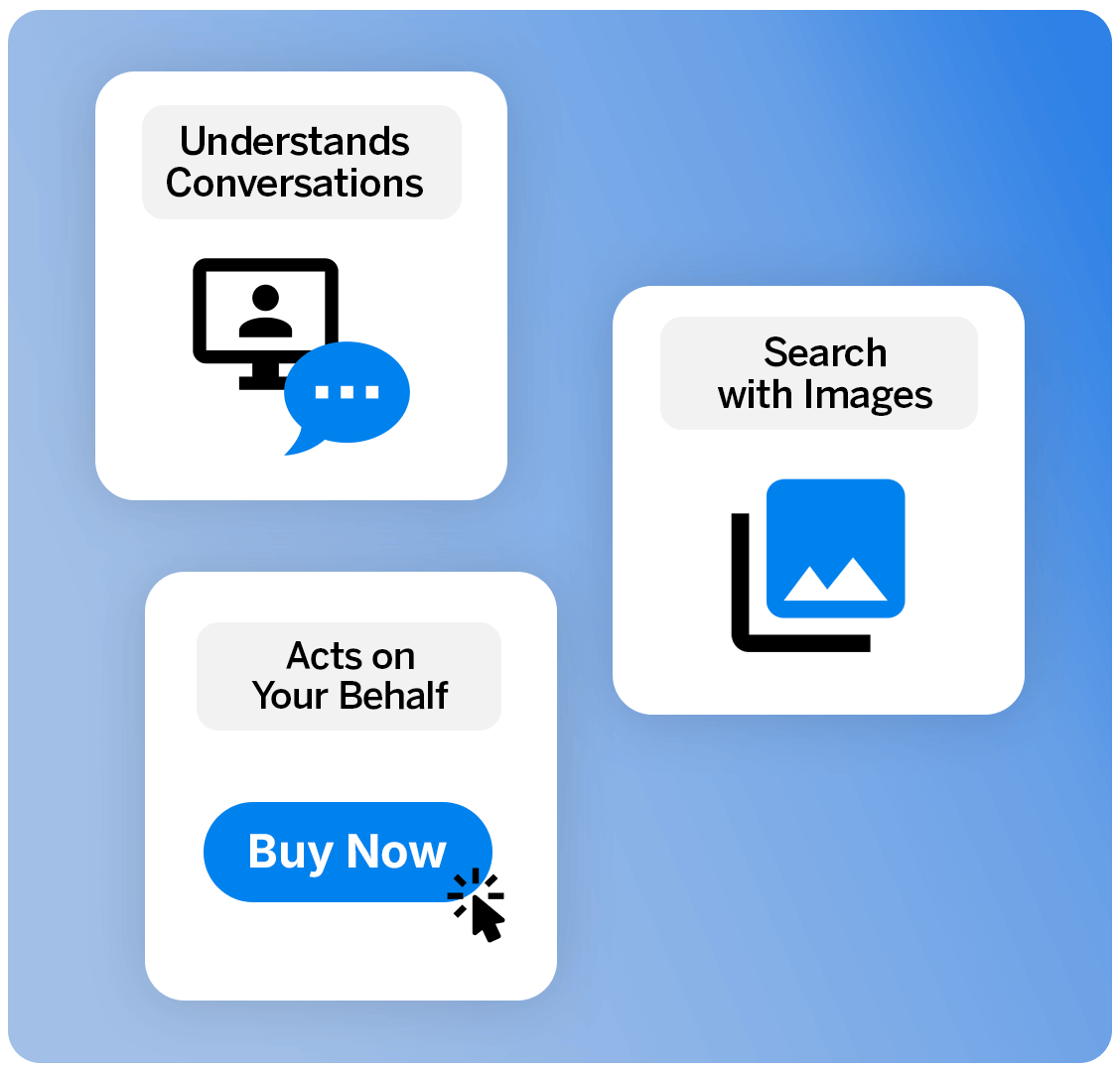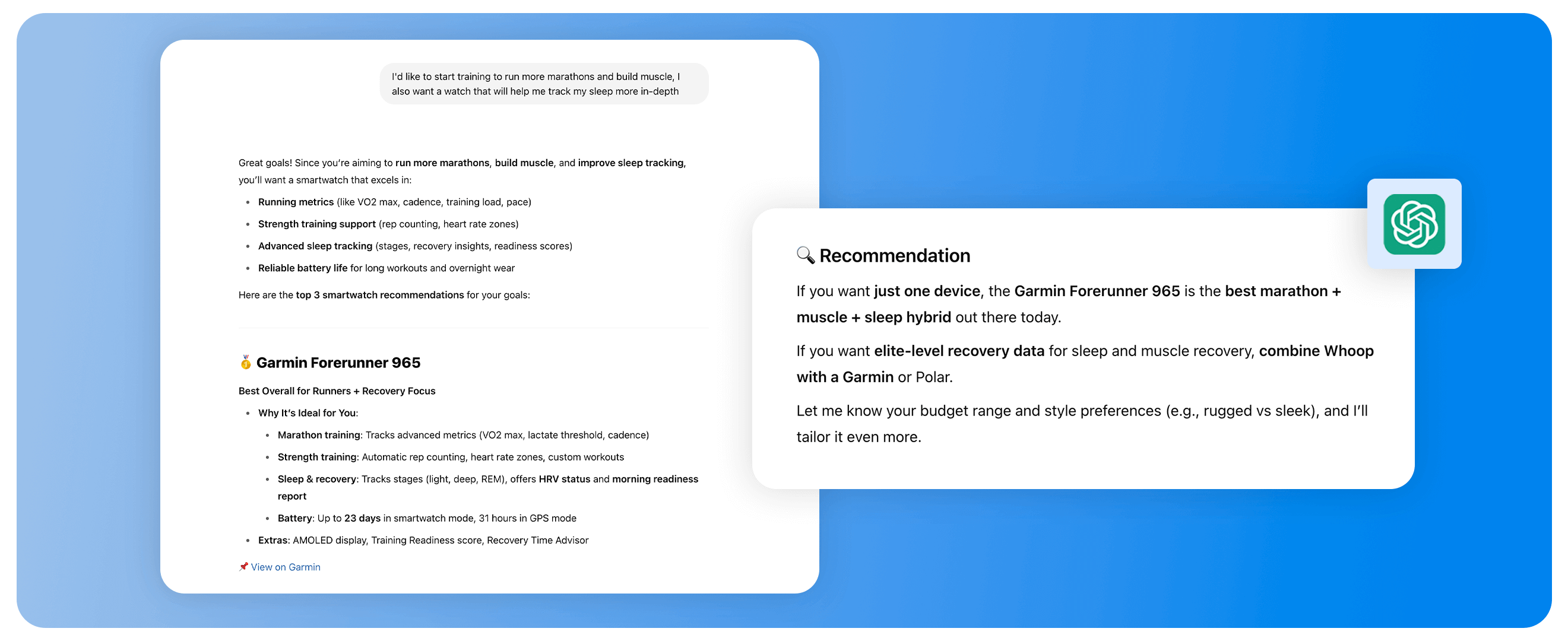
As AI reshapes how consumers shop, from search to seamless recommendations, brands must pivot to Generative Engine Optimisation (GEO) or risk disappearing from the digital shelf.

A seismic shift is occurring in how consumers discover and purchase products.
The era of typing keywords into Google and clicking through a list of blue links is gradually giving way to a new paradigm: AI-driven, personalised shopping experiences that fundamentally alter the consumer journey.
For brands, this transition means a strategic pivot toward Generative Engine Optimization (GEO) is needed to maintain visibility and relevance.
Recent developments across major platforms highlight this transformation.
ChatGPT now offers shopping features that display visual product carousels within conversations, while Google has introduced AI Mode with virtual try-ons and agentic checkout capabilities.
Perplexity has launched “Shop like a Pro“, enabling users to research and purchase products without leaving their platform.
These innovations share a common thread: they’re removing traditional search friction and creating more intuitive, conversational shopping experiences.
Instead of forcing consumers to navigate the traditional purchase funnel, AI is compressing the journey from discovery to purchase into streamlined, personalised recommendations.


Generative Engine Optimization is quickly becoming as crucial as SEO was in the early days of search.
Unlike traditional SEO focusing on keywords and backlinks, GEO centres on ensuring your brand appears in AI-generated recommendations and product comparisons. Here’s why it’s becoming essential:
Recommendations Over Rankings: AI shopping assistants don’t just display search results, they actively recommend specific products based on user needs, preferences and conversation context. Being left out of these recommendations means invisibility in the new consumer journey.
Reduced Competitive Visibility: When ChatGPT or Google’s AI Mode recommends only 3-5 products for a query rather than showing pages of search results, the competition for visibility becomes significantly more intense.
Trust Transfer: Consumers are increasingly willing to trust AI recommendations as objective and personalised, placing immense importance on being positioned as the top recommendation for relevant queries.


The mechanics of how AI selects products to recommend differ fundamentally from traditional search algorithms:
Contextual Understanding: AI shopping assistants consider the full context of conversations, including past preferences, clarifying questions and even implied needs not explicitly stated.
Multimodal Interactions: Features like Google’s Snap-to-Shop and Perplexity’s visual search allow consumers to initiate shopping journeys with images rather than text, bypassing keyword-based discovery entirely.
Agentic Capabilities: Perhaps most revolutionary are the emerging agentic features that can complete purchases on a user’s behalf, track prices and notify users when conditions are met, further compressing the traditional purchase journey.
To thrive in this landscape, brands need a comprehensive strategy that ensures visibility across AI shopping platforms:
Structured Data Enhancement: AI models rely heavily on structured product data to understand and recommend your products. Comprehensive schema markup, accurate product attributes and clear categorisation are no longer optional.
Multi-Channel Data Consistency: Ensure product information is consistent across all channels, as AI platforms may cross-reference data from multiple sources to validate product details.
Content Optimisation for AI Consumption: Consider implementing standards like llms.txt, which provides AI-friendly content summaries and helps language models better understand your offerings.
Local Presence Amplification: Even with AI’s global reach, local relevance remains crucial. Brands with strong local digital footprints across multiple channels are more likely to be recommended when location context is pertinent.
Review Management: AI recommendations frequently incorporate review sentiment analysis. A strategic approach to generating and managing authentic reviews becomes essential for positive AI visibility.


The traditional search-and-click model is giving way to a more personalised, conversational approach to commerce. Consumers increasingly expect AI to understand their specific needs and present them with relevant, curated options rather than forcing them to wade through pages of results.
For brands, this represents both challenge and opportunity. Those who adapt quickly by building robust GEO strategies will gain disproportionate visibility in AI shopping recommendations, while those who remain fixated solely on traditional SEO risk becoming invisible in the AI-driven shopping landscape.
The future of product discovery isn’t about ranking #1 in search results – it’s about being the #1 recommendation in a conversation between a consumer and their AI shopping assistant. Is your brand prepared for this fundamental shift?
Filter specialises in helping brands navigate the evolving landscape of AI commerce through comprehensive GEO strategies. Contact our team to learn how we can help position your products for maximum visibility in the age of AI-driven shopping.

Why WooCommerce is Your Gateway to the Future of AI-Powered Shopping
WooCommerce offers a flexible entry into AI-powered “agentic commerce,” where AI agents assist customers. WooCommerce’s open architecture and protocols like ACP and MCP allow integration without platform migration. Optimising product data for AI discoverability is key. We help businesses prepare their WooCommerce stores for this future.